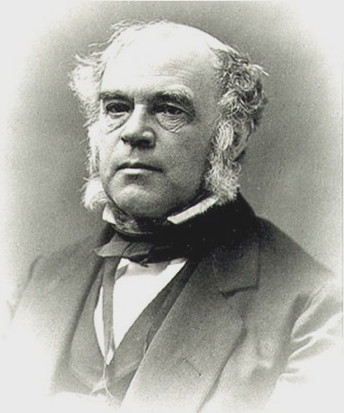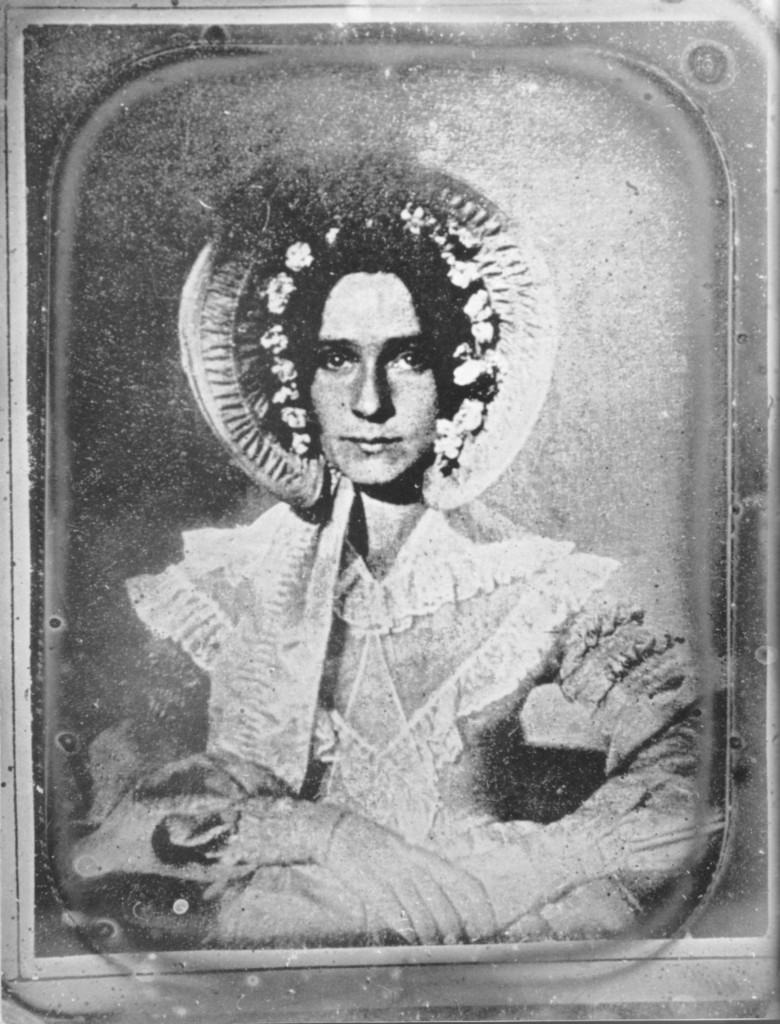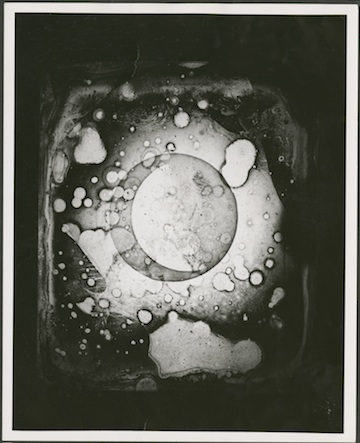
John WIlliam Draper (1811-1882)
On May 5, 1811, American philosopher, physician, chemist, historian and photographer John William Draper was born. He is credited with producing the first clear photograph of a female face (1839–40) and the first detailed photograph of the Moon (1840). He was also the first president of the American Chemical Society (1876–77) [14] and a founder of the New York University School of Medicine.
John William Draper – Early Years
John William Draper was born May 5, 1811 in St. Helens, Lancashire, England to John Christopher Draper, a Wesleyan clergyman, who needed to move the family due to serving various congregations throughout England. Draper was home tutored until 1822, when he entered Woodhouse Grove School, followed by another interval of home instruction until he entered the University College London to study chemistry in 1829. There Draper studied chemistry under Edward Turner, an admirer of Berzelius and the author of one of the earliest English textbooks in organic chemistry. Turner interested Draper in the chemical effects of light and thereby gave his career a decisive turn.[3] Following his father’s death in July, 1831, John William Draper together with his mother and his siblings was urged to move to Virginia, where he hoped to acquire a teaching position at a local Methodist college.
Research in Medical Sciences and Chemistry
In 1832, the family settled in Mecklenburg County, Virginia. Although he arrived too late to obtain the prospective teaching position, John William Draper established a laboratory in Christiansville for his own research. Here he experimented in capillary attraction and published eight papers before entering medical school. In March 1836, he graduated from the University of Pennsylvania School of Medicine. That same year, he began teaching at Hampden-Sydney College in Virginia. He contributed to British and American scholarly journals and in 1838 he was appointed professor of chemistry and botany at the University of the City of New York.
Improving Photography
As early as 1837, while still in Virginia, he had followed the example of Wedgwood and Davy in making temporary copies of objects by the action of light on sensitized surfaces. When the details of Daguerre’s process for fixing camera images were published, Draper further improved on his work, which previously only had allowed slow exposures of landscapes.[8] In 1839–1840, Draper produced clear photographs, which at that time were regarded as the first life photographs of a human face. Draper took a series of pictures, with a 65-second exposure in sunlight. The first ones, of a female assistant whose face was covered with a thin layer of flour to increase contrast, were not preserved. Draper also photographed his sister, Dorothy Catherine Draper, and one of those pictures became known to the public via a letter which Draper sent to astronomer John Herschel in 1840.[6] The same year in New York City, using a camera made from a cigar box and an eyeglass lens, Draper opened the world’s first photographic portrait studio, in partnership with Samuel Morse. Exposure as long as 90 seconds was required, so Draper instructed his students of photography not to allow subjects to place their hands on their chests, as “the motion of respiration disturbs [the hands] so much as to make them have a thick, clumsy appearance.”[2]

Copy of a photograph of Dorothy Catherine Draper taken by John Draper c. 1840. [12]
The Birth of Astronomical Photography
In March 1840 Draper became the first person to produce photographs of an astronomical object, the Moon, considered the first astrophotographs. He obtained “distinct” representations of the dark spots or lunar maria. In 1843 he made daguerreotypes which showed new features on the moon in the visible spectrum. Draper developed the proposition in 1842 that only light rays that are absorbed can produce chemical change, which came to be known as the Grotthuss–Draper law. In 1843 Draper constructed a “tithonometer,” or device for measuring the intensity of light, based on the discovery by Gay-Lussac and Thénard in 1809 that light causes hydrogen and chlorine to combine progressively.[3] In 1847 Draper published the observation that all solids glow red at about the same temperature, about 798 K, which has come to be known as the Draper point.

The earliest surviving daguerreotype of the Moon by Draper (1840)
The Darwin Controversy
On Saturday 30 May the 1860 Oxford evolution debate with the famous exchange between Bishop Wilberforce and T. H. Huxley, featured Draper’s lecture on his paper “On the Intellectual Development of Europe, considered with reference to the views of Mr. Darwin and others, that the progression of organisms is determined by law.” Draper’s presentation was an early example of applying a Darwinian metaphor of adaptation and environment to social and political studies, but was thought to be long and boring. From this time forward, Draper was regarded as a valiant defender of science against religion. His most popular book, widely read in many translations, was a History of the Conflict Between Religion and Science (1874), a vigorous polemic against the persecution of scientists by religionists.[3]
Later Years
In 1876, John William Draper served as the first president of the American Chemical Society.[14] He died on January 4, 1882, at the age of 70. Draper’s son and granddaughter were the noted astronomers Henry Draper and Antonia Maury.[4]
History of Photography with Thomas Alleman, [11]
References and Further Reading:
- [1] John William Draper Facts, at YourDictionary
- [2] John William Draper at NNDB
- [3] Draper, John William, at Complete Dictionary of Scientific Biography, 2008, Charles Scribner’s Sons.
- [4] Henry Draper and his Passion for Astronomy, SciHi Blog
- [5] Jöns Jacob Berzelius – One of the Founders of Modern Chemistry, SciHi Blog
- [6] John Herschel – a Pioneer in Celestial Photography, SciHi Blog
- [7] John William Draper at Wikidata
- [8] Making Photography Really Operational – Louis Daguerre, SciHi Blog
- [9] Works by or about John William Draper at Internet Archive
- [10] National Academy of Sciences Biographical Memoir
- [11] History of Photography with Thomas Alleman, Los Angeles Center of Photography @ youtube
- [12] Howard R. McManus, “The Most Famous Daguerreian Portrait: Exploring the History of the Dorothy Catherine Draper Daguerreotype,” The Daguerreian Annual 1995, pp. 148–171.
- [13] Barker, George F. (April 21, 1886). Memoir of John William Draper. 1811-1882 . Read before the Natural Academy.
- [14] “John W. Draper and the Founding of the American Chemical Society, 1876”. American Chemical Society.
- [15] Timeline of English Chemists, via DBpedia and Wikidata






Pingback: Whewell’s Gazette: Vol. #47 | Whewell's Ghost
Pingback: Whewell’s Gazette: Year 3, Vol. #38 | Whewell's Ghost